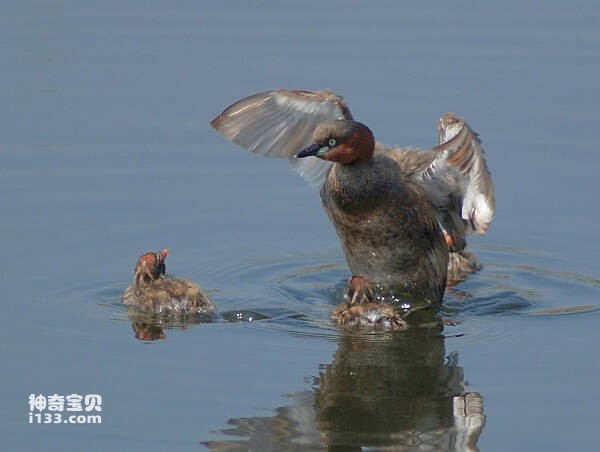Tachybaptus rufolavatus
IUCN
LCBasic Information
Scientific classification
- name:Tachybaptus rufolavatus
- Scientific Name:Tachybaptus rufolavatus,Alaotra Grebe
- Outline:Waterfowl
- Family:
Vital signs
- length:No textual research information is available
- Weight:No textual research information is available
- lifetime:No textual research information is available
Feature
It was declared extinct on 26 May 2010
Distribution and Habitat
It is found in the Indian Ocean (including Madagascar and its nearby islands).
Living in freshwater lakes, swamps in the plant cluster, almost life in the water, often cluster living.
Appearance
The little Grebe is a swimming bird. The difference between Grebe and other grebe is that the plumage is very distinct. The head is maroon, the neck reddish brown, and the mouth is mixed with black, brown, and white. Black mouth, straight mouth, flat side, with tip; The nostrils are open and located near the base of the mouth; The wings are short, with 12 primary feathers, the first remains, and the fifth secondary feathers missing. The tail has only a few short soft feathers, or almost no feathers. Place your feet near your hips. Flat tarsus, suitable for diving; Each of the four toes has a wide webbed flap; The claws are blunt and broad, the inner edge of the middle toe is serrated, and the back toe is short, higher or absent than the other toes. The body feathers are short and dense, with moisture resistance; Feathers with accessory feathers, caudal lipid gland coverts; Both sexes are similar. The skull was split palatine type and whole nose type. Lacking basal pterygoid process; La
Details
Little Grebe: Tachybaptus rufolavatus, Alaotra Grebe, is not good at flying. They use their feet instead of wings and rarely walk on the ground. Can dive for food, generally diving only 1 ~ 4m deep. Food is mainly aquatic insects and larvae, crustaceans, mollusks, small fish and grass.

When breeding, the little Grebe builds floating nests in the grass near the water, made of reeds, weeds, and some clay. Each egg is produced 2 to 7, white, mostly stained by dirt. The male and female incubate the eggs in turn. The eggs hatch for about 25 days. The young are early sex, the body is densely feathered, can move freely, in the chicks hatched 2-3 weeks, the parent birds often put the chicks on the back, frightened diving they are under the wings.
The Grebe population has been declining since the mid-20th century. The main causes are predation by the exotic species Eleotris and a reduction in the gene pool caused by natural hybridization with little grebe. They were last observed in 1985 and declared extinct on May 26, 2010. However, they may still be rediscovered, because in 2006, the Madagascar diver, once thought to be extinct, was rediscovered in Lake Arautra.
Listed in the International Union for Conservation of Nature (IUCN) ver 3.1:2010 Red List of birds - Critically Endangered (CR).
Protect wild animals and eliminate wild meat.
Maintaining ecological balance is everyone's responsibility!








